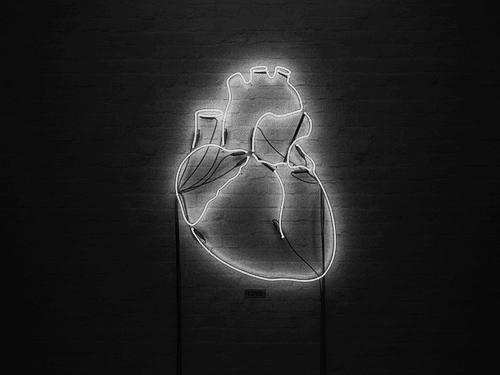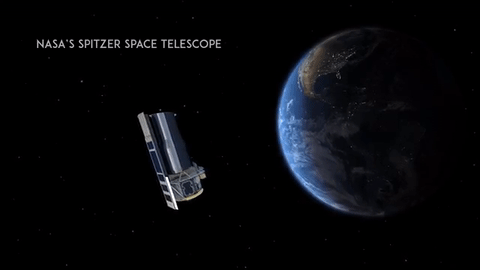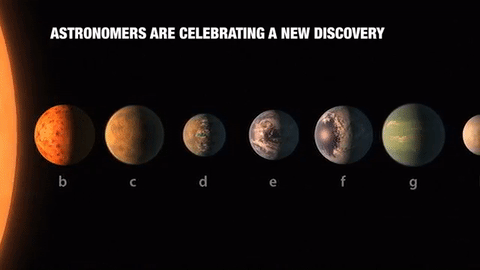If The Moon Were Replaced With Some Of Our Planets (at Night)








If the Moon were replaced with some of our planets (at night)
Image credit: yeti dynamics
More Posts from Delightfulskywalker and Others









han solo icons >> pack 3
please like and/or reblog if you take feel free to ask for a different colour
all icons | icon page | request here
Largest Batch of Earth-size, Habitable Zone Planets
Our Spitzer Space Telescope has revealed the first known system of seven Earth-size planets around a single star. Three of these planets are firmly located in an area called the habitable zone, where liquid water is most likely to exist on a rocky planet.

This exoplanet system is called TRAPPIST-1, named for The Transiting Planets and Planetesimals Small Telescope (TRAPPIST) in Chile. In May 2016, researchers using TRAPPIST announced they had discovered three planets in the system.

Assisted by several ground-based telescopes, Spitzer confirmed the existence of two of these planets and discovered five additional ones, increasing the number of known planets in the system to seven.

This is the FIRST time three terrestrial planets have been found in the habitable zone of a star, and this is the FIRST time we have been able to measure both the masses and the radius for habitable zone Earth-sized planets.
All of these seven planets could have liquid water, key to life as we know it, under the right atmospheric conditions, but the chances are highest with the three in the habitable zone.

At about 40 light-years (235 trillion miles) from Earth, the system of planets is relatively close to us, in the constellation Aquarius. Because they are located outside of our solar system, these planets are scientifically known as exoplanets. To clarify, exoplanets are planets outside our solar system that orbit a sun-like star.

In this animation, you can see the planets orbiting the star, with the green area representing the famous habitable zone, defined as the range of distance to the star for which an Earth-like planet is the most likely to harbor abundant liquid water on its surface. Planets e, f and g fall in the habitable zone of the star.
Using Spitzer data, the team precisely measured the sizes of the seven planets and developed first estimates of the masses of six of them. The mass of the seventh and farthest exoplanet has not yet been estimated.

For comparison…if our sun was the size of a basketball, the TRAPPIST-1 star would be the size of a golf ball.
Based on their densities, all of the TRAPPIST-1 planets are likely to be rocky. Further observations will not only help determine whether they are rich in water, but also possibly reveal whether any could have liquid water on their surfaces.
The sun at the center of this system is classified as an ultra-cool dwarf and is so cool that liquid water could survive on planets orbiting very close to it, closer than is possible on planets in our solar system. All seven of the TRAPPIST-1 planetary orbits are closer to their host star than Mercury is to our sun.

The planets also are very close to each other. How close? Well, if a person was standing on one of the planet’s surface, they could gaze up and potentially see geological features or clouds of neighboring worlds, which would sometimes appear larger than the moon in Earth’s sky.

The planets may also be tidally-locked to their star, which means the same side of the planet is always facing the star, therefore each side is either perpetual day or night. This could mean they have weather patterns totally unlike those on Earth, such as strong wind blowing from the day side to the night side, and extreme temperature changes.

Because most TRAPPIST-1 planets are likely to be rocky, and they are very close to one another, scientists view the Galilean moons of Jupiter – lo, Europa, Callisto, Ganymede – as good comparisons in our solar system. All of these moons are also tidally locked to Jupiter. The TRAPPIST-1 star is only slightly wider than Jupiter, yet much warmer.
How Did the Spitzer Space Telescope Detect this System?
Spitzer, an infrared telescope that trails Earth as it orbits the sun, was well-suited for studying TRAPPIST-1 because the star glows brightest in infrared light, whose wavelengths are longer than the eye can see. Spitzer is uniquely positioned in its orbit to observe enough crossing (aka transits) of the planets in front of the host star to reveal the complex architecture of the system.

Every time a planet passes by, or transits, a star, it blocks out some light. Spitzer measured the dips in light and based on how big the dip, you can determine the size of the planet. The timing of the transits tells you how long it takes for the planet to orbit the star.

The TRAPPIST-1 system provides one of the best opportunities in the next decade to study the atmospheres around Earth-size planets. Spitzer, Hubble and Kepler will help astronomers plan for follow-up studies using our upcoming James Webb Space Telescope, launching in 2018. With much greater sensitivity, Webb will be able to detect the chemical fingerprints of water, methane, oxygen, ozone and other components of a planet’s atmosphere.
At 40 light-years away, humans won’t be visiting this system in person anytime soon…that said…this poster can help us imagine what it would be like:

Make sure to follow us on Tumblr for your regular dose of space: http://nasa.tumblr.com
I'm a girl and I love science 😀
Science Side of Tumblr, I need your help! Ladies of the Science Side of Tumblr, I especially need your help!
I had a conversation at my non-science day job that went like this:
A friend who shall be called Diane (not her real name) comes to my desk to chat. Just one of the many topics we discuss is that her boyfriend is taking a class in wildlife biology. She has decided that she has grown tired of hearing about local wildlife and hearing him recite a plethora of scientific names.
I responded positively to this subject, and told her that I too found the subject interesting. A third person had heard our conversation. We shall call her Claire (again, not her real name). Claire immediately responded, “Girls don’t like that kind of thing.”
“Are you saying that girls don’t like science?” I asked.
“No, not normally they don’t,” she responded.
Before you all screech with anguish, bear with me for a moment. We all know that this is not true. As a man, I find this idea upsetting for countless reasons that have all been validly discussed before. To try to debate the issue is rather moot. Instead, I’d like a show of hands.
Ladies of the Science Side of Tumblr! I call you to arms! Will you rally around me in saying that women can and do indeed love science, of any variety? Gentleman of the Science Side of Tumblr who know someone who is a girl who also happens to love science, will you stand with me too? We all like and reblog the pro-women-in-science posts we see so often, let’s all stand and be counted in one place this time.
Reblog this if you are a woman who loves science. Reblog this if you are a man who knows a woman who loves science. Let us disprove her beyond all doubt!
-
 poetizasse liked this · 9 months ago
poetizasse liked this · 9 months ago -
 dragondrawer28 reblogged this · 1 year ago
dragondrawer28 reblogged this · 1 year ago -
 dragondrawer28 liked this · 1 year ago
dragondrawer28 liked this · 1 year ago -
 cursedepub-archive reblogged this · 1 year ago
cursedepub-archive reblogged this · 1 year ago -
 gamelpar liked this · 1 year ago
gamelpar liked this · 1 year ago -
 synchbomegodni liked this · 1 year ago
synchbomegodni liked this · 1 year ago -
 angolymo liked this · 1 year ago
angolymo liked this · 1 year ago -
 cant-apult reblogged this · 2 years ago
cant-apult reblogged this · 2 years ago -
 dailymusemaniac reblogged this · 2 years ago
dailymusemaniac reblogged this · 2 years ago -
 wisent15 liked this · 2 years ago
wisent15 liked this · 2 years ago -
 wisent15 reblogged this · 2 years ago
wisent15 reblogged this · 2 years ago -
 lionesserampant reblogged this · 2 years ago
lionesserampant reblogged this · 2 years ago -
 arlhin reblogged this · 2 years ago
arlhin reblogged this · 2 years ago -
 diamond-doge liked this · 2 years ago
diamond-doge liked this · 2 years ago -
 wordsmithie reblogged this · 2 years ago
wordsmithie reblogged this · 2 years ago -
 wordsmithie liked this · 2 years ago
wordsmithie liked this · 2 years ago -
 arrhythmia-on-avalon reblogged this · 2 years ago
arrhythmia-on-avalon reblogged this · 2 years ago -
 mosdefftheprez reblogged this · 2 years ago
mosdefftheprez reblogged this · 2 years ago -
 kaymordred liked this · 2 years ago
kaymordred liked this · 2 years ago -
 michaelormewood reblogged this · 2 years ago
michaelormewood reblogged this · 2 years ago -
 ittybittydice reblogged this · 2 years ago
ittybittydice reblogged this · 2 years ago -
 ittybittydice liked this · 2 years ago
ittybittydice liked this · 2 years ago -
 section-69 liked this · 2 years ago
section-69 liked this · 2 years ago -
 enterprisery liked this · 2 years ago
enterprisery liked this · 2 years ago -
 nys30 reblogged this · 2 years ago
nys30 reblogged this · 2 years ago -
 nys30 liked this · 2 years ago
nys30 liked this · 2 years ago -
 harryfj liked this · 2 years ago
harryfj liked this · 2 years ago -
 tokidokifish liked this · 2 years ago
tokidokifish liked this · 2 years ago -
 obrienpolycule liked this · 2 years ago
obrienpolycule liked this · 2 years ago -
 themetaisawesome reblogged this · 2 years ago
themetaisawesome reblogged this · 2 years ago -
 irresistible-revolution reblogged this · 2 years ago
irresistible-revolution reblogged this · 2 years ago -
 spacecadetdispatch liked this · 2 years ago
spacecadetdispatch liked this · 2 years ago
"Hope is like the sun. If you only believe it when you see it, you'll never make it through the night." -Princess Leia
286 posts




